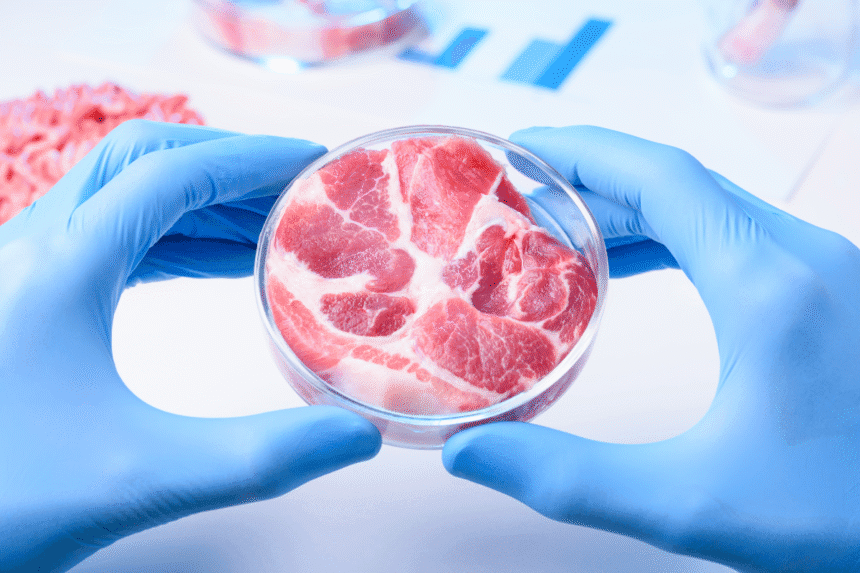Why We Need a Protein Revolution
By 2050, the world population is expected to exceed 9.7 billion. Feeding this growing population without pushing our planet beyond its limits is one of humanity’s biggest challenges. At the center of this crisis lies a key nutrient: protein.
Traditionally sourced from livestock, meat, and dairy, protein production is resource-intensive, contributing to deforestation, water scarcity, and about 14.5% of global greenhouse gas emissions. The search for sustainable, ethical, and efficient alternatives has led to three major innovations:
Insects, Lab-Grown Meat, and Plant-Based Proteins.
Insects: Tiny Creatures with Huge Potential
Nutritional Powerhouse
Insects such as crickets, mealworms, and grasshoppers are high in protein, rich in fiber, packed with micronutrients (like iron and B12), and low in fat. For instance, 100 grams of cricket powder can contain more protein than the same amount of beef.
Environmentally Efficient
80% of a cricket is edible, compared to only 40–50% of a cow.
Insects produce 1% of the greenhouse gases of cattle.
They require significantly less water and land.
Global Consumption & Barriers
More than 2 billion people already consume insects regularly, especially in parts of Asia, Africa, and Latin America. However, psychological barriers, limited regulation, and lack of familiarity remain challenges in Western countries.
Lab-Grown Meat: Cultivating the Future of Meat
What Is It?
Also known as cultivated or cell-based meat, lab-grown meat is developed from animal cells without raising or slaughtering animals. The beef is biologically identical to conventional meat.
Pros
Animal cruelty-free
Lower risk of foodborne diseases
Potentially less use of antibiotics and hormones
Potentially 90% less greenhouse gas emissions and 99% less land use
Challenges
High production costs (though decreasing steadily)
Energy consumption for bioreactors and storage
Consumer acceptance and perception
Countries like Singapore and Israel have already approved and marketed lab-grown meat products, and the US FDA has given initial approvals as of 2023.
Plant-Based Proteins: Familiar, Yet Evolving Fast
What’s on the Plate?
Plant-based proteins include soy, peas, lentils, chickpeas, mushrooms, jackfruit, and grains. These sources have been used for centuries, but modern food tech has taken them to a new level—think Beyond Meat, Impossible Foods, and Oatly.
Advantages
Easily scalable and accepted in most diets
Lower cost and resource usage compared to meat
Zero cholesterol and generally high in fiber
Limitations
Some products are highly processed
Taste and texture may not appeal to all meat lovers
Dependence on specific crops (like soy) may raise concerns around monoculture farming
Nonetheless, innovation continues, with companies working on better textures, flavors, and clean-label plant-based products.
Environmental and Social Impact
Comparison Snapshot:
| Protein Source | GHG Emissions | Land Use | Water Use | Animal Welfare |
|---|---|---|---|---|
| Beef (Traditional) | Very High | Very High | Very High | Poor |
| Insects | Very Low | Very Low | Low | Excellent |
| Lab-Grown Meat | Low (but variable) | Low | Moderate | Excellent |
| Plant-Based | Very Low | Low | Low | Excellent |
Global Food Security
Alternative proteins could help:
Bridge protein gaps in malnourished regions
Reduce pressure on dwindling natural resources
Create new economic opportunities in sustainable agriculture and food innovation
However, we must also consider cultural acceptance, food literacy, and equity of access to these new protein sources.
What the Future Holds
Will alternative proteins fully replace conventional meat? Likely not shortly. Instead, we may see a “blended future”, where:
Insects are used in protein powders and animal feed
Lab-grown meat becomes available at select restaurants and markets
Plant-based proteins continue to dominate retail shelves
Governments, private companies, and NGOs must work together to:
Fund research and scaling
Create regulatory frameworks
Launch public education campaigns
A Sustainable Plate for Tomorrow
The path toward sustainable protein is not about guilt or restriction — it’s about expanding choices that are better for human health, animal welfare, and the planet.
Whether it’s a burger made from peas, a meatball grown in a lab, or cricket flour in your protein bar — these alternatives may soon be a regular part of your plate.
Want to make a difference?
Try alternative protein products
Support local food innovators
Stay informed and spread awareness
Because the future of food — and our planet — is on the table.







